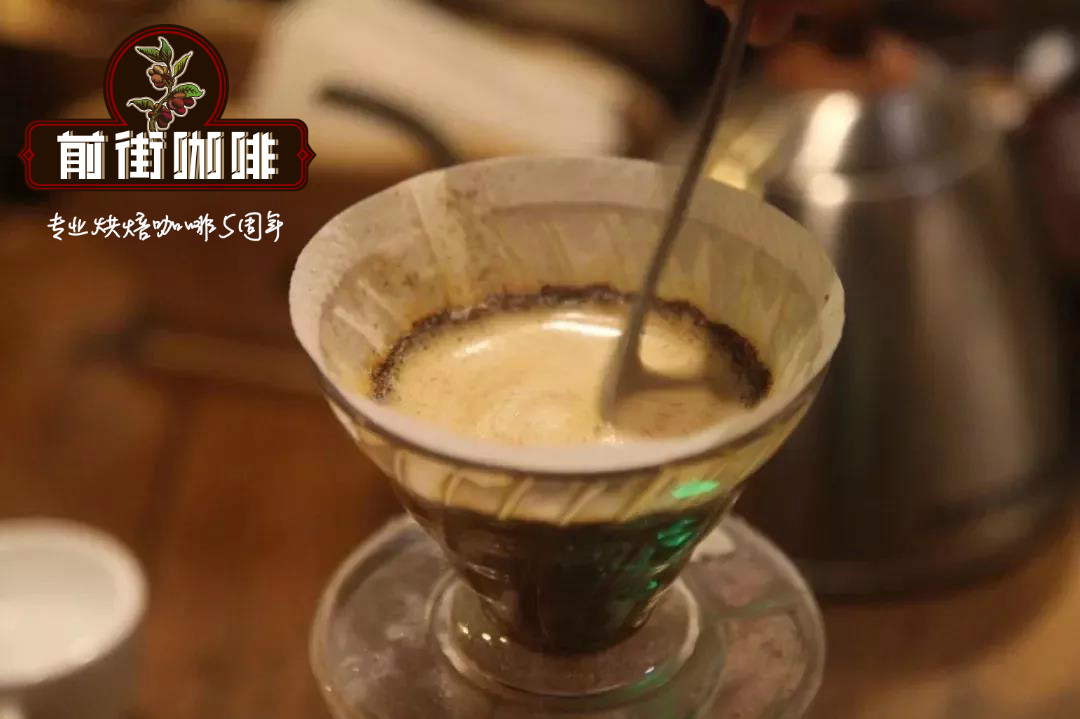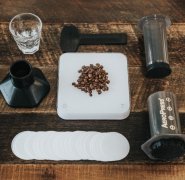The influence of hand-brewing techniques on the Flavor of hand-brewed Coffee basic knowledge of how to make good coffee

Professional coffee knowledge exchange more coffee bean information please follow the coffee workshop (Wechat official account cafe_style)
As the name implies, hand-brewed coffee is to pour hot water on the coffee powder and remove the coffee by hand through filter paper and filter cup. the process is about 3 to 4 minutes. The flavor of each brewed coffee will be different because of the change of water temperature, flow rate and direction, so although the utensils and operation are very simple, they still pay great attention to techniques and experience.
It is different from the legal pressure and Philharmonic pressure we mentioned earlier in that coffee is no longer made through the principle of soaking, but through filter cups and filter paper, and water is produced through coffee powder. However, whether it is soaked or over-powdered by water, it is still extracted, that is, when the water comes into contact with the coffee powder, the substance dissolved in the coffee dissolves into the water. In a short period of 2-3 minutes, there are many details in the extraction process, such as the water temperature, the thickness and evenness of the coffee powder, the time of brewing with the equipment used, the times of stirring, etc. After all, the barista is a human being. The subtle condition of the body that day will also affect the final flavor, which is why hand-brewed coffee has an ever-changing flavor compared to machine-brewed coffee. The degree of variation of hand-brewed coffee is very high. Many different coffee beans have been introduced before, and their own tastes are different, and each parameter can be adjusted according to personal preferences, returning to the nature of hand-brewed coffee and extraction. This is not to say that the European and American hand rush is better than the Japanese style. In fact, the European and American hand Chong serves the operation to some extent. On the other hand, the Japanese-style hand flushing technique is more pleasing to the eye, and it is done well, and it is equally delicious, but the style is different.
There is a truth that we will understand that the thicker the powder, the less flavor will be extracted per unit time. Therefore, when you inject water, you will let the water stay for a long time. This explains why Japanese-style water injection places special emphasis on a slow and extremely stable column of water compared with Europe and the United States. And Europe and the United States, is a relatively fine grinding, you can use a faster flow rate, a short time to fully extract. (the Japanese style takes about three minutes to complete) therefore, it is relatively easier to master.
Secondly, there are two concepts of water temperature. First, the water temperature during extraction and drinking time. The reason why it is fixed at 94 °is also to improve the extraction efficiency. But I do not have a warm cup this time, I hope that the high temperature of 94 °will come into contact with the coffee powder, then flow into the pot, and then pour into the cup, there will be a gradual cooling. In this way, about 70 °in the mouth is a more drinkable "start".
The reason for putting quotation marks at the beginning is that it is different from espresso. Espresso only has 30ml, which will cool too fast. Cappuccino milk is affected by temperature and is delaminated quickly. So espresso cups tend to be preheated, and the walls are very thick for heat preservation. But filtered coffee such as hand brewing, from 70 °to 50 °, the taste of the coffee will change a lot as it cools. Although it can be simply summed up from bitterness to acidity, the acidity here is the process of fruit acid prominence. Therefore, filter coffee cups tend to be thinner and drink more "vividly". If you find that the coffee is too sour, grind it fine, and if the coffee has a mixed smell, what you can do is to thicken it. Of course, there is also a situation that is both mixed and sour. It depends on whether your extraction is uniform and the freshness of the coffee beans.
Back to the extraction, hand flushing is ultimately the process of water over powder and filtration.
Important Notice :
前街咖啡 FrontStreet Coffee has moved to new addredd:
FrontStreet Coffee Address: 315,Donghua East Road,GuangZhou
Tel:020 38364473
- Prev

Hand brewing coffee originated from the development of hand brewing utensils. Beginners learn the skills of hand brewing coffee.
Professional coffee knowledge exchange more coffee bean information please follow the coffee workshop (Wechat official account cafe_style) briefly explain the coffee beans to a cup of coffee liquid hand-brewed coffee process, coffee beans are the seeds of coffee fruit, raw beans must be processed, roasted in the hands of the bean baker to become cooked beans, then, the beans into a bean grinder grinding into a uniform coffee powder?
- Next

How can I make an iced latte without a coffee maker? Can Philharmonic pressure make espresso?
Professional coffee knowledge exchange more coffee bean information please follow the coffee workshop (Wechat official account cafe_style) you like the cold taste of the iced latte, with the mellow coffee and sweet milk, but do not have a coffee maker? This article teaches you how to make a simple and delicious iced latte by following ten steps. You need to prepare 1. 2.300ml whole milk with ice cubes
Related
- Beginners will see the "Coffee pull flower" guide!
- What is the difference between ice blog purified milk and ordinary milk coffee?
- Why is the Philippines the largest producer of crops in Liberia?
- For coffee extraction, should the fine powder be retained?
- How does extracted espresso fill pressed powder? How much strength does it take to press the powder?
- How to make jasmine cold extract coffee? Is the jasmine + latte good?
- Will this little toy really make the coffee taste better? How does Lily Drip affect coffee extraction?
- Will the action of slapping the filter cup also affect coffee extraction?
- What's the difference between powder-to-water ratio and powder-to-liquid ratio?
- What is the Ethiopian local species? What does it have to do with Heirloom native species?

